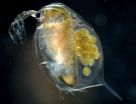(Press-News.org) Ground-breaking research has successfully created the world's first truly electronic textile, using the wonder material Graphene.
An international team of scientists, including Professor Monica Craciun from the University of Exeter, have pioneered a new technique to embed transparent, flexible graphene electrodes into fibres commonly associated with the textile industry.
The discovery could revolutionise the creation of wearable electronic devices, such as clothing containing computers, phones and MP3 players, which are lightweight, durable and easily transportable.
The international collaborative research, which includes experts from the Centre for Graphene Science at the University of Exeter, the Institute for Systems Engineering and Computers, Microsystems and Nanotechnology (INESC-MN) in Lisbon, the Universities of Lisbon and Aveiro in Portugal and the Belgian Textile Research Centre (CenTexBel), is published in the leading scientific journal Scientific Reports.
Professor Craciun, co-author of the research said: "This is a pivotal point in the future of wearable electronic devices. The potential has been there for a number of years, and transparent and flexible electrodes are already widely used in plastics and glass, for example. But this is the first example of a textile electrode being truly embedded in a yarn. The possibilities for its use are endless, including textile GPS systems, to biomedical monitoring, personal security or even communication tools for those who are sensory impaired. The only limits are really within our own imagination."
At just one atom thick, graphene is the thinnest substance capable of conducting electricity. It is very flexible and is one of the strongest known materials. The race has been on for scientists and engineers to adapt graphene for the use in wearable electronic devices in recent years.
This new research has identified that 'monolayer graphene', which has exceptional electrical, mechanical and optical properties, make it a highly attractive proposition as a transparent electrode for applications in wearable electronics. In this work graphene was created by a growth method called chemical vapour deposition (CVD) onto copper foil, using a state-of-the-art nanoCVD system recently developed by Moorfield.
The collaborative team established a technique to transfer graphene from the copper foils to a polypropylene fibre already commonly used in the textile industry.
Dr Helena Alves who led the research team from INESC-MN and the University of Aveiro said: "The concept of wearable technology is emerging, but so far having fully textile-embedded transparent and flexible technology is currently non-existing. Therefore, the development of processes and engineering for the integration of graphene in textiles would give rise to a new universe of commercial applications. "
Dr Ana Neves, Associate Research Fellow in Prof Craciun's team from Exeter's Engineering Department and former postdoctoral researcher at INESC added: "We are surrounded by fabrics, the carpet floors in our homes or offices, the seats in our cars, and obviously all our garments and clothing accessories. The incorporation of electronic devices on fabrics would certainly be a game-changer in modern technology.
"All electronic devices need wiring, so the first issue to be address in this strategy is the development of conducting textile fibres while keeping the same aspect, comfort and lightness. The methodology that we have developed to prepare transparent and conductive textile fibres by coating them with graphene will now open way to the integration of electronic devices on these textile fibres"
Dr Isabel De Schrijver, an expert of smart textiles from CenTexBel said: "Successful manufacturing of wearable electronics has the potential for a disruptive technology with a wide array of potential new applications. We are very excited about the potential of this breakthrough and look forward to seeing where it can take the electronics industry in the future."
Professor Saverio Russo, co-author and also from the University of Exeter, added: "This breakthrough will also nurture the birth of novel and transformative research directions benefitting a wide range of sectors ranging from defence to health care. "
In 2012 Professor Craciun and Professor Russo, from the University of Exeter's Centre for Graphene Science, discovered GraphExeter - sandwiched molecules of ferric chloride between two graphene layers which makes a whole new system that is the best known transparent material able to conduct electricity. The same team recently discovered that GraphExeter is also more stable than many transparent conductors commonly used by, for example, the display industry.
INFORMATION:
Researchers map regional droughts from space which can affect the livelihood of millions of people in West Africa
Soil moisture observations can map land degradation with more accuracy than typical rainfall data as soil moisture directly leads to plant growth
Study shows that the land conditions across much of West Africa have improved between 1982-2012 based on soil moisture observations
A group of international researchers led by the Centre for Landscape and Climate Research at the University of Leicester have used space satellite technology to identify regions ...
PITTSBURGH--We know that bacteriophages are viruses that infect and replicate within bacteria. We know that they are the most abundant organisms on Earth. But we don't know much about their genetic architecture.
A team of professional scholars and budding scientists--chiefly college freshmen--have joined forces under the aegis of SEA-PHAGES (Science Education Alliance-Phage Hunters Advancing Genomics and Evolutionary Science), which is run jointly by the University of Pittsburgh and the Howard Hughes Medical Institute, to study the little-known genetics of bacteriophages. ...
May 11, 2015--With rates of prescription drug overdose at an all-time high, researchers at Columbia University's Mailman School of Public Health found that among individuals who visited the emergency department, the risk of subsequently dying from prescription drug overdose increased markedly based on how many times they visited the ER. Relative to patients with one or fewer trips to the ER in the previous year, the risk of dying from prescription drug overdose was five times the rate for those with two visits, 17 times for those with three visits, and 48 times for those ...
A research collaboration between the universities of Oslo and Aarhus has resulted in the development of a new method with diagnostic potential. The new method that combines phase extraction with an enzymatic reaction may eventually be used for an improved and faster screening analysis of isatin as a potential indicator of stress and neurological disorders.
Isatin is a small organic molecule found in low concentrations in different tissues and is excreted with the urine via the blood stream. Isatin is supposedly a degradation product from the neurotransmitters, e.g. dopamine ...
WASHINGTON, May 11, 2015 -- More than 25 million people rely on Adderall™ and other similar drugs to help treat narcolepsy, depression and attention deficit and hyperactivity disorder (ADHD). But how does amphetamine, the active ingredient in Adderall™, work? This week, Reactions explains how amphetamine helps you focus. Check out the video here: https://youtu.be/MeJRBsghMt8.
INFORMATION:Subscribe to the series at http://bit.ly/ACSReactions, and follow us on Twitter @ACSreactions to be the first to see our latest videos.
The American Chemical Society is ...
Physicians treating hospitalized patients for conditions unrelated to the kidneys should pay close attention to common blood and urine tests for kidney function in order to prevent incidental injury to the organs that help cleanse the body of toxins, new Johns Hopkins Bloomberg School of Public Health-led research suggests.
The findings, published this month in two studies in the American Journal of Kidney Diseases, suggest that while being older, male, African-American or having diabetes are risk factors for developing acute kidney injury, the strongest risk factor is ...
An international group of scientists has proposed that fallout from hundreds of nuclear weapons tests in the late 1940s to early 1960s could be used to mark the dawn of a new geological age in Earth history - the Anthropocene.
The study, led by Dr Colin Waters of the British Geological Survey, published new research in the Bulletin of the Atomic Scientists. The research involved 10 members of the Anthropocene Working Group that is chaired by Professor Jan Zalasiewicz of the Department of Geology at the University of Leicester and Gary Hancock, a world expert on plutonium ...
May 11, 2015 - What are the most influential studies on surgery of the lower (lumbar) spine? The "top 100" research papers in lumbar spine are counted down in a special review in the May 15 issue of Spine, published by Wolters Kluwer.
Dr. Samuel K. Cho and colleagues of Icahn School of Medicine at Mount Sinai, New York City, performed a literature review to analyze and quantify the most important research papers on lumbar spine surgery. Their results raise some interesting "questions, trends and observations"--including the finding that the two most-cited studies ...
The water flea has genetically adapted to climate change. Biologists from KU Leuven, Belgium, compared 'resurrected' water fleas -- hatched from 40-year-old eggs -- with more recent specimens. The project was coordinated by Professor Luc De Meester from the Laboratory of Aquatic Ecology, Evolution and Conservation.
The water flea has genetically adapted to climate change. Biologists from KU Leuven, Belgium, compared 'resurrected' water fleas - hatched from forty-year-old eggs - with more recent specimens. The project was coordinated by Professor Luc De Meester from the ...
What does space experimentation have in common with liquid cocktails? Both help in understanding what happens when multiple fluids are mixed together and subjected to temperature change - a phenomenon ubiquitous in nature and industrial applications such as oil fluids contained in natural reservoirs. The latest experimental data performed in zero gravity on the International Space Station is now available in the newly published Topical Issue of EPJ E. The results constitute the first set of highly accurate and broadly validated data on the thermodiffusion effects that occur ...


